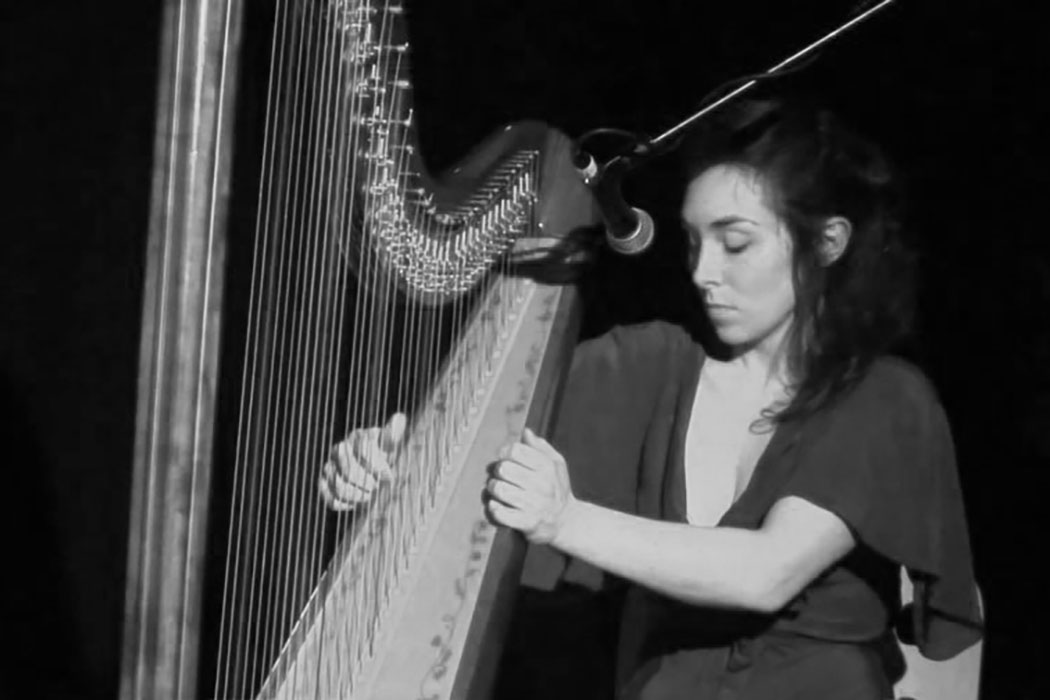Irish multi-instrumentalist and vocalist Áine O’Dwyer is known for her unique site-specific performances, which often draw on her performative art background. Integral to the conception of each performance and recording are a location’s acoustics, atmosphere and history. For her latest album, Gallarias, she sat up shop in the River Thames tunnel shaft, 50 feet in diameter and 50 feet deep. The acoustic delay, as well as the sounds of planes and trains that seeped into the shaft, and O’Dwyer’s responses to these, all became part of the recording.
Though making herself known as a harpist in Irish groups such as experimental folk band United Bible Studies, O’Dwyer’s organ playing won her wider recognition. Originally released in an edition of 100 cassettes in 2012, Music for Church Cleaners was widely heralded upon a more expansive 2015 vinyl release. Seven months of Saturday morning organ improvisations at London’s St. Mark’s Church yielded the recordings, which incorporate the sounds and conversations of church cleaners going about their duties. O’Dwyer’s capacity for imaginative improvisation is so enthralling (and oddly soothing), I continue to find subtle evidence of the workers in the mix as I repeatedly returned to the album.
Both O’Dwyer’s music and vocalising can lead to unexpected places. She has been known to perform behind curtains and under cloth, or incorporate dance into a piece. O’Dwyer’s choices are the result of an artist who is not content to entertain in the traditional fashion, and seems to view each performance as a challenge or dare, to herself and the audience. Her methods are meant to not just interrogate the passive listening experience, but where and why we usually do this listening.
“My approach was developed out of my need to explore and celebrate the performativity of place outside of structured environments, which were built to house hierarchies and gendered establishments,” O’Dwyer explains in an email interview. “As a performer who uses sound both in the recorded sense and in the performative sense, I began to ask myself, how does one enter a space that is perpetually voicing life and how does one create a dialogue with that perpetual voice which is so full of meaning in itself? What could I possibly add? What do I say to that voice which already exists? Who is that voice? I am never alone and I am always in collaboration, this can relate to the space, the audience, the listener, the recording device, or the instrument, and the meanings of these five elements overlap each other.”
Having played several church organs in Australia, Bosnia, France, the Netherlands, the U.S. and the U.K., O’Dwyer will be doing so in Knoxville’s Church Street United Methodist Church on Saturday, March 23, in a program of William Eggleston’s music. One of America’s most influential photographers, Eggleston has also recorded synthesizer improvisations at home, selections of which were released last year on an album titled Musik, a reference to Eggleston’s love for J.S. Bach. It’s an inspired pairing, and it will surely be interesting to hear Eggleston’s exploration on a Korg translated to an Aeolian-Skinner pipe organ.
O’Dwyer will also perform on Friday, March 22 at the Knoxville Museum of Art, and what she’ll get up to there is anyone’s guess.









Great articles written by Eric Dawson.